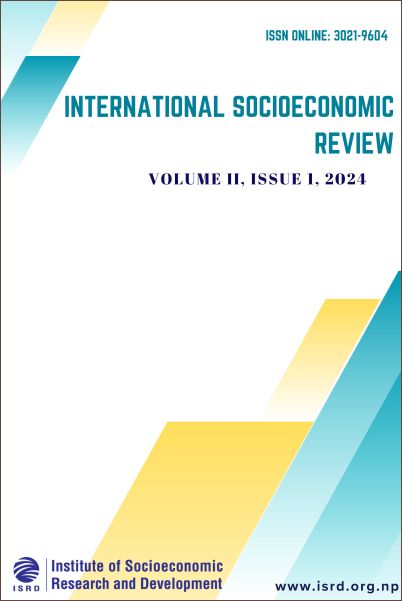Climate change adaptation strategy: Cardamom, Community and Community Based Forest users of Nepal
DOI:
https://doi.org/10.3126/iser.v2i1.75234Keywords:
Climate Change Adaptation, Cardamom, Resilience, LivelihoodsAbstract
The paper intends to capture how communities are developing climate change adaptation strategies according to their own context. Climate change is a global issue. Communities are providing local solutions to tackle this challenge. This study was conducted in in Rolpa, Dang, Dolakha, and Ilam districts of Nepal. The household survey was conducted in three districts (Dolakha, Rolpa and Dang). The Focus Group Discussion, Key Informant Interview, and SWOT anal-ysis was held in all four districts. The national level secondary information was reviewed. Based climate adaptation theory, a conceptual framework was developed where adaptation process contributes the livelihoods in achieving resilience in the community. Based on this model, findings are discussed. The cardamom is considered as one of the high value crops in Nepal. Switching to cardamom crops from conventional crops in community and its introduction in community-based forestry is one of the strategies to tackle adverse effects of climate change. Such strategies contribute to the livelihoods of the community and enhance resilience. Cardamom is produced in community land, private land and in community-based forests. The production of cardamom is in increasing trend in all three districts, Rolpa, Ilam and Dolakha. The cardamom farming is giving farmers almost three to five times benefit in comparison to traditional crops such as maize, and rice etc. The traditional trade route of cardamom involves stakeholders including local level farmer as producer, district level aggregation and subsequently to central level. Cardamom is also exported to India from ground transportation, Kathmandu, and international market. Some associated challenges evolved in each stage. The international trade of cardamom depends on the level of expo-sure, capacity and quality.
Downloads
Downloads
Published
How to Cite
Issue
Section
License
Copyright (c) 2024 International Socioeconomic Review

This work is licensed under a Creative Commons Attribution 4.0 International License.
This license enables reusers to distribute, remix, adapt, and build upon the material in any medium or format, so long as attribution is given to the creator. The license allows for commercial use.




